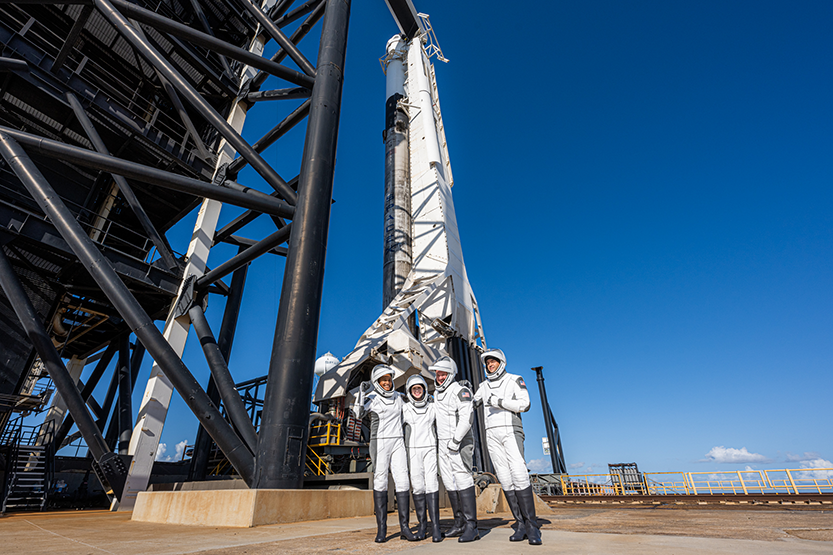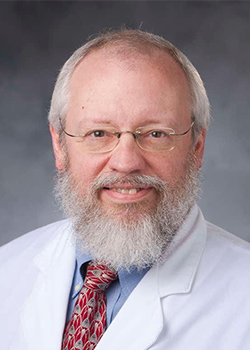
Medical Mystery in Microgravity: Can Space Travel Raise the Risk of Blood Clots?
Dominic Tanzillo is on a mission—not to space, but to the lab, where he’s unraveling a mystery that could have life-or-death consequences for astronauts.
The third-year medical student at Duke University School of Medicine is investigating whether microgravity—the near-weightless environment of space—raises the risk of blood clots. It’s a question with growing urgency as NASA prepares to send humans back to the Moon in 2027 through the Artemis III mission, marking the first time in over 50 years that astronauts will walk on the lunar surface.
“Astronauts need doctors too,” said Tanzillo who is part of the Duke Pathology Study Program. “People are always going to need medical care. And when you put people in space, you’re going to need to know how their bodies react to it.”
Tanzillo’s curiosity was sparked in 2020 when he read about an astronaut who developed a large clot in their internal jugular vein during spaceflight. That single case pointed to a potential risk: could the near-weightless conditions of spaceflight contribute to dangerous clot formation? If so, the implications for long-term missions to the Moon or Mars could be serious.
He knew that if astronauts have increased clotting risk, steps must be taken to proactively prevent clots from forming in advance of sending them to space.

Aiming for Safe Space Travel
At the heart of Tanzillo’s research is the Virchow Triad, a model that identifies three key factors contributing to blood clot formation: abnormalities in blood composition, damage to vessel walls, and sluggish blood flow, known as stasis. He saw a potential link between microgravity and stasis, particularly in the veins of the head and neck.
In the weightless environment of space, where fluids shift upward, blood may pool in these areas, increasing clot risk. If a clot formed and traveled to the lungs, it could cause a life-threatening pulmonary embolism.

To test his hypothesis, Tanzillo turned to the Cornell Aerospace Medicine Biobank, which houses blood samples from commercial astronauts. His goal? To find biochemical markers that indicate increased clotting risk after short-duration spaceflights.
Even slight changes could suggest that microgravity influences the body’s clotting mechanisms, raising the need for preventive measures before astronauts embark on extended missions.
Tanzillo has worked closely with his mentor, Thomas Lee Ortel, MD, PhD, chief of the Division of Hematology at Duke School of Medicine, to ensure the study meets rigorous scientific standards. His early efforts focused on establishing interinstitutional data-sharing agreements, refining blood collection and storage protocols, and identifying tests that would remain reliable even years after sample collection.
He collaborated with the Duke BioRepository & Precision Pathology Center, which could analyze the tiny blood volumes available—less than a milliliter per astronaut.
Next Era of Space Medicine
His research also benefited from his prior experience at NASA. As a mission-essential research intern during the COVID-19 lockdown, he worked with virtual reality tools to help train NASA pilots. Later, as a contractor at Johnson Space Center, he became familiar with space medicine studies.
Through his connections, he identified a rare research opportunity: blood samples from the all-civilian Inspiration4 SpaceX mission, a three-day orbital flight in 2021. This brief exposure to microgravity was ideal for assessing whether clotting risks emerge after just a few days in space.
If his findings confirm a link between microgravity and clot formation, the next step will be devising ways to mitigate the risk—potentially through medication, compression garments, or changes in astronaut training.
Beyond his research, Tanzillo has been a driving force in expanding space medicine education at Duke. He and fellow student Nick Saba developed a Space Medicine course published on Coursera, reaching learners worldwide. He helped start a student club that has morphed into the Duke Exploration and Development of Space (Duke SEDS), adding momentum to a growing student desire for more space studies at Duke.
He also teaches a course on virtual reality applications in medicine through Duke’s Bass Connections Program. In 2023, he shared his passion for space medicine in a TEDx talk.
With Saba, he co-hosts a podcast, “Spherical Cows: In Space, No One Can Hear You,” where they explore astrobiology and bioastronautics. Their first guest? Christopher Mason, PhD, a leading scientist on NASA’s 2015 Twins Study, who runs the Cornell lab supplying the blood samples for Tanzillo’s research.
As preparations are underway for a new era of deep-space exploration, Tanzillo’s work is helping answer a crucial question: how do we keep astronauts safe as they venture beyond Earth? With support from a Donald B. Hackel Fellowship in Cardiovascular Pathology, he hopes to publish his findings this year.
“I’m grateful to Dr. Ortel and for the fellowship for enabling and sponsoring this work,” Tanzillo said. “Dr. Ortel is a fantastic mentor. He has been a constant resource and sounding board for my ideas, while giving me the freedom to set up this project.”
Tanzillo’s research could be a vital step in ensuring that astronauts not only reach their destinations—but return home safely.
Jamie Botta is assistant director of marketing and communications for the Department of Pathology at the Duke University School of Medicine.
Photography by Eamon Queeney, assistant director of multimedia and creative for the Office of Strategic Communications.
